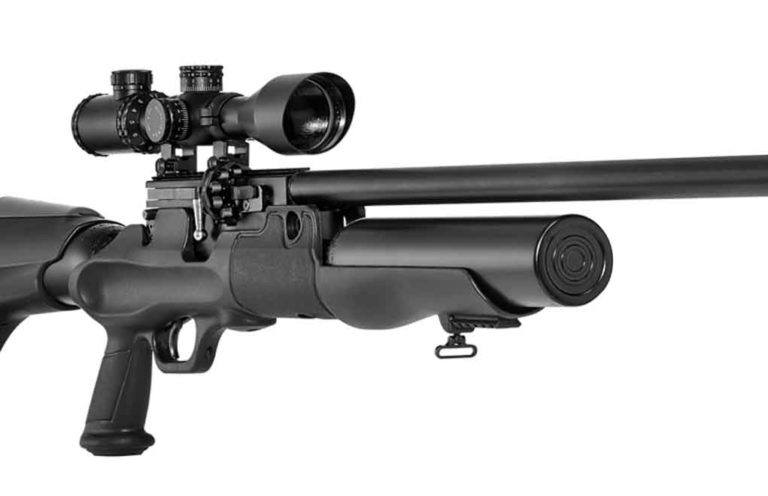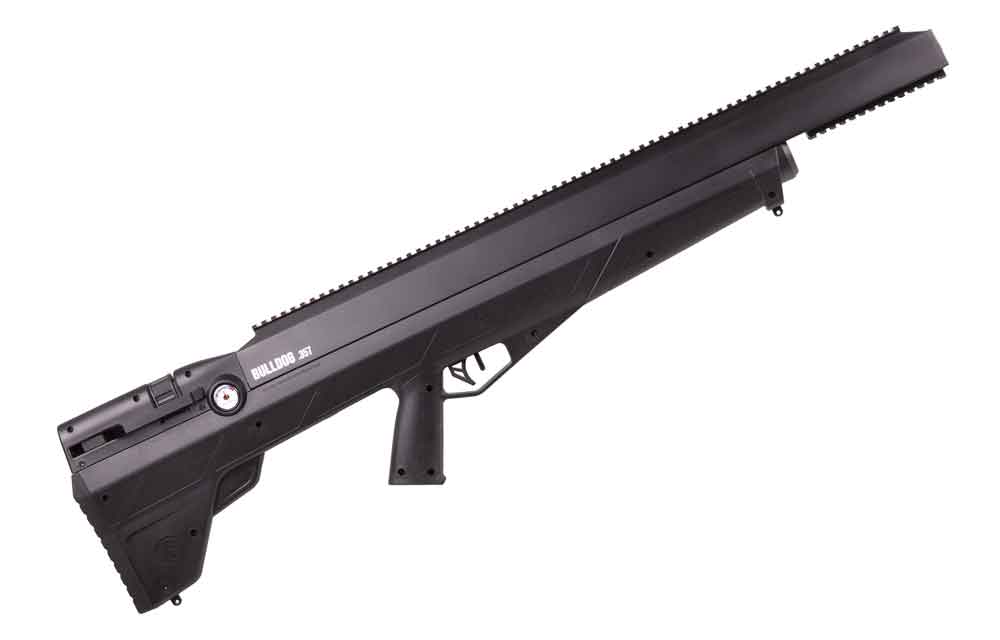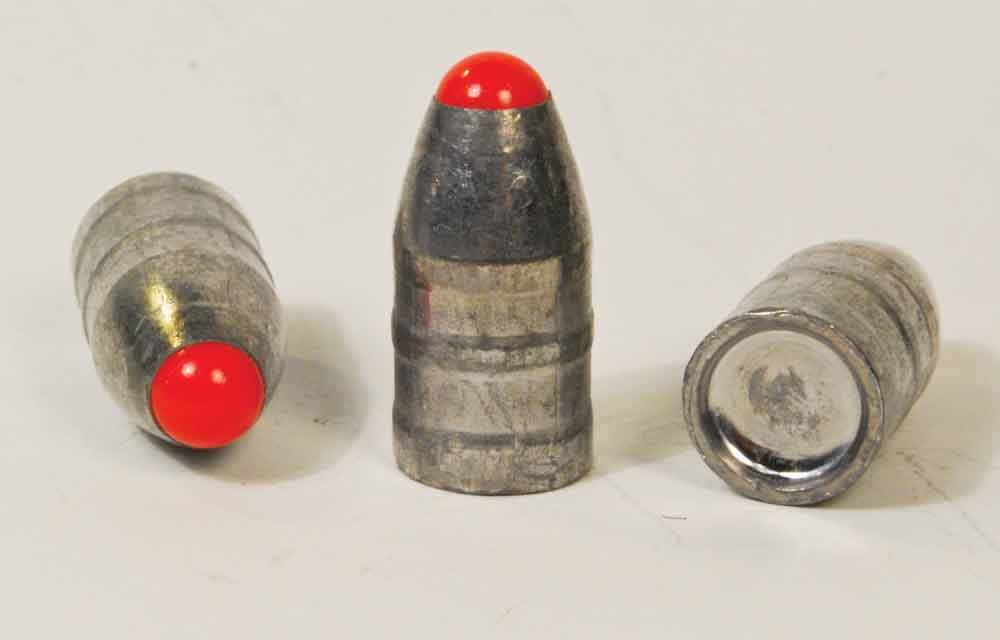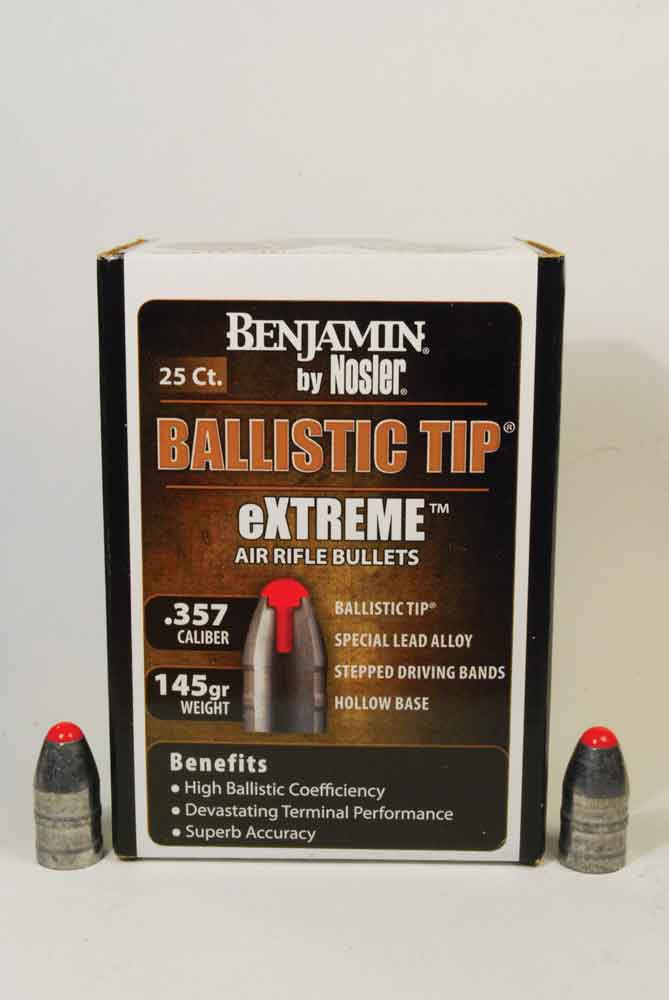
Although not as potent as powder-fueled firearms, airguns are now capable of delivering power equivalent to that of large-caliber handgun cartridges.
How modern airguns are set to blow shooters away:
- Airgun power is supplied in many ways: pump, break-action piston and pre-charged pneumatic.
- PCP airguns are capable of achieving pressures high as 3,000-3,600 psi.
- Some of the popular PCP hunting rifles are chambered in .25, .30, .35 and .45 caliber.
- The drawback of PCP rifles: They require a pump or scuba tank to fill their reservoir.
- Some .357 PCP rifles can achieve muzzle energy akin to a .38 Special.
Guns that launch projectiles by means of compressed air are nothing new. In fact, an airgun accompanied Lewis and Clark on the Corps of Discovery Expedition of 1804-1806, and airguns were not new even way back then. In the early 1900s, multi-pump airguns became common, with one of the most common models being the Benjamin.

Although the Lewis and Clark airgun was a .33-caliber model, the most common calibers were .177 and .22 for many years. In 1948, the .20-caliber Sheridan multi-pump appeared, and the Sheridan was popular for many years. In spite of these historical aspects, recent developments have resulted in a new generation of airguns that are vastly more capable than the common models of yesteryear.
Power Plant Options
Power is supplied to airgun projectiles in several ways, even though compressed air is the common denominator. In the case of a multi-pump model, a lever is operated through a stroke that draws in air in one motion and forces it into a compression chamber in a reverse motion. By means of several complete strokes, the air in the compression chamber can achieve a pressure of several hundred pounds per square inch (psi). At the time of firing, a blow to a release valve allows the air to escape behind the pellet forcing it down the bore. As a result, multi-pump air rifles have variable power options.
Another type of air rifle, the break-action, utilizes the barrel as a cocking lever, and the cocking motion moves a piston in the receiver to the rear drawing air into a compression chamber inside the receiver. As the piston moves to the rear, it compresses a strong spring that drives the piston forward at the time of firing, which compresses the air and drives the pellet forward for the shot. Although only one cocking motion is involved, the effort required is considerable and may be as much as 50 pounds for a powerful airgun.

One disadvantage of this type of rifle is that, upon firing, a heavy piston and spring jump forward — giving the rifle recoil to the rear. When the piston reaches its most forward position, it yanks the rifle forward. These motions make it difficult to shoot the rifle accurately, and the opposite motions of the rifle can quickly ruin scopes, most of which can withstand recoil only in one direction.
A third type of power plant is the pre-charged pneumatic or PCP version. In a PCP rifle, a reservoir is filled with air under high pressure by some external means. The two most popular compressing techniques are by means of a special hand-operated pump or a scuba tank. By either of these means, it’s possible to achieve a pressure as high as 3,000-3,600 psi. With this much pressure, the force on the base of the pellet is considerably greater than with either of the other power plants, so pellet velocity can be higher. Couple that with a heavy pellet of large diameter, and the result is a very powerful airgun. For hunting applications, some of the most popular calibers for PCP rifles are .25, .30, .35 and .45 caliber.
PCP rifles tend to be bulky and heavy because they have large, sturdy reservoirs. Also, they require some sort of external source of compressed air to fill the reservoir. They do, however, have advantages other than just the high power level. The reservoir holds a sufficient amount of air under high pressure to make it possible to fire several shots in quick succession.

Therefore, many of the PCP rifles are repeaters that hold several pellets in some sort of magazine, the most common of which is a rotating cylinder. These features make a PCP rifle the best choice for use in hunting. In fact, hunters are able to use the large-caliber rifles to kill deer or hogs. Although air rifles may be practical for hunting medium game, they’re not necessarily economical. Most of the .35- and .45-caliber rifles are priced around $700 or higher. Also, you will need a special pump or a scuba tank to fill the reservoir.
Practical Pneumatic Ballistics
Even a pressure of 3,000-3,600 psi is nowhere near that at which typical firearms operate. For example, most loads for a .38 Special revolver generate a pressure of approximately 16,000 psi, and those for a .357 or .44 Magnum run twice that high. Some popular .357 PCP rifles give a projectile weighing about 150 grains a velocity of 800-900 fps and, thus, produce muzzle energies in the 200-300 fpe range, about equivalent to a .38 Special load. Even a .45-caliber model generates energies in the 400-500 fpe range, about the equivalent of .45 Auto or .45 Colt loadings. Although these energies are high for airguns, they do not approach even the power of a lowly .30-30 Winchester, which gives around 1,800 fpe.
Some potent .25-caliber air rifles drive a pellet weighing approximately 30 grains at a velocity of close to 1,000 fps. A .22 Short standard velocity load drives a 29-grain bullet at 1,045 fps, which corresponds to a muzzle energy of 70 fpe. My .25s are powerful airguns, but they are still just that — airguns.

.25-caliber versions.
Despite having considerable power, the velocity produced by even “magnum” airguns is relatively low. A .357 model can have a velocity that’s less than 1,000 fps, and a pellet is not aerodynamically efficient. The result is that the trajectory has a lot of curvature, so the rifles do not shoot flatter than a .22 LR. Even potent air rifles are short-range tools compared to “standard” firearms. As a result, hunters using air rifles need to be able to get close and place the projectile accurately.
Modern high-powered airguns are marvelous devices, but they are really suitable for use at rather short ranges. The trajectory is simply too curved because of the relatively low velocity. Also, the pellets are blunt-nosed, which results in their losing velocity rather rapidly. With a pellet having a ballistic coefficient of approximately 0.125 traveling at a muzzle velocity of 1,000 fps, an effective range of perhaps 75 yards is reasonable if the rifle is sufficiently accurate. Although they’re used to take larger species, even high-powered airguns are at their best on pests and predators.
Pumping a multi-pump rifle draws in air that can be compressed. At high altitude, the atmosphere is “thinner,” so atmospheric pressure is less. Each pump stroke draws in less air at high altitude, so with the same number of pump strokes, pellet velocity is lower than at low altitude. The same situation exists for a break-action air rifle. Both types of rifles give lower velocity at high altitude, but the multi-pump can be given an extra pump or two to compensate for the thinner atmosphere. It’s not possible to do that with a break-action model. In the case of a PCP rifle, the reservoir is filled to give a specific pressure, which is independent of the external atmosphere. However, it will take more pumping at high altitude to achieve that pressure. Altitude has no effect on the velocity produced by a PCP rifle.
Projectiles
Not only have airguns undergone significant development in recent years, but so also have the projectiles that they launch. Using only compressed air for propulsion, the working pressure of air rifles is low compared to gas pressure in a firearm. Accordingly, the pellets must be made of lead in order to reduce friction and to produce a good seal in the bore. Jacketed bullets or those made of hard alloys do not work well.

However, even with those limitations, there are many pellet designs. Some have rounded, pointed or hollow noses, whereas others have polymer inserts. Projectiles of all these types are available in .177, .20, .22 and .25 calibers, but the choices in .30, .35 and .45 calibers are much more limited. In the large calibers, the projectiles tend to be solid and resemble the bullets used in firearm ammunition.
Several years ago, Hornady began producing handgun ammunition featuring bullets that have a hollow point in which a polymer insert is placed. Other bullets with polymer tips include the Hornady V-Max, Sierra BlitzKing and Nosler Ballistic Tip. With the development of a .357-caliber Benjamin rifle, Crosman introduced the Ballistic Tip eXtreme that has a polymer tip.
Produced by Nosler, the projectile weighs 145 grains and has a polymer insert in the nose. Because air rifles operate at low pressure, the bases of projectiles are often hollow or have a thin skirt so that they will expand to provide a good seal in the bore. Large-diameter projectiles for airguns are specialty items, and some versions cost approximately $1 each. In some of the large calibers, the choice of pellets is limited.

In recent years, the craze to achieve high velocity has not been restricted to powder-powered firearms. With power plant design limitations being what they are, higher velocity can be achieved by using pellets of lighter weight. As a result, several manufacturers have introduced pellets made of lightweight alloys. However, there’s no free lunch, so these lighter pellets lose velocity quickly and rarely give accuracy equal to that of lead pellets. This situation is improving, and some of the lightweight pellets perform very well and are even used in target matches.
Even though Lewis and Clark took along PCP rifles having the reservoir in the butt stock on the voyage of 1804-1806, airguns of today are a far cry from those produced even a half-century ago. Those in .25 or greater caliber are becoming more popular for use in various types of hunting that’s not limited to pests and small game. However, laws regarding such usage may not be the same as those dealing with centerfire or rimfire firearms, so check before assuming that one can use an airgun in the same way.
Editor's Note: This article originally appeared in the February 2018 issue of Gun Digest the Magazine.

Next Step: Get your FREE Printable Target Pack
Enhance your shooting precision with our 62 MOA Targets, perfect for rifles and handguns. Crafted in collaboration with Storm Tactical for accuracy and versatility.
Subscribe to the Gun Digest email newsletter and get your downloadable target pack sent straight to your inbox. Stay updated with the latest firearms info in the industry.

![Best Concealed Carry Guns In 2025 [Field Tested] Wilson Combat EDC X9S 1](https://gundigest.com/wp-content/uploads/Wilson-Combat-EDC-X9S-1-324x160.jpg)


![Best 9mm Carbine: Affordable PCCs [Tested] Ruger Carbine Shooting](https://gundigest.com/wp-content/uploads/Ruger-Carbine-Shooting-100x70.jpg)
![Best AR-15: Top Options Available Today [Field Tested] Harrington and Richardson PSA XM177E2 feature](https://gundigest.com/wp-content/uploads/Harrington-and-Richardson-PSA-XM177E2-feature-100x70.jpg)

Another advantage of airguns is they are easier to manufacture. As a firearm may be subject to 35,000 PSI or more and require precise metal and metallurgy. Not many could fabricate a firearm receiver. An airgun can be fabricated on a home lathe with mild steel or aluminum stock and a high pressure vessel sourced online. It is still a project using high enough pressure to take some of the same precautions but has been accomplished by several hobbyists. There are also several smaller airguns that can be modified to shoot big bore pellets or bullets. Check out some of the big bores on Youtube. There is a .50 caliber and .44 caliber big bore as well as several 30 calibers.